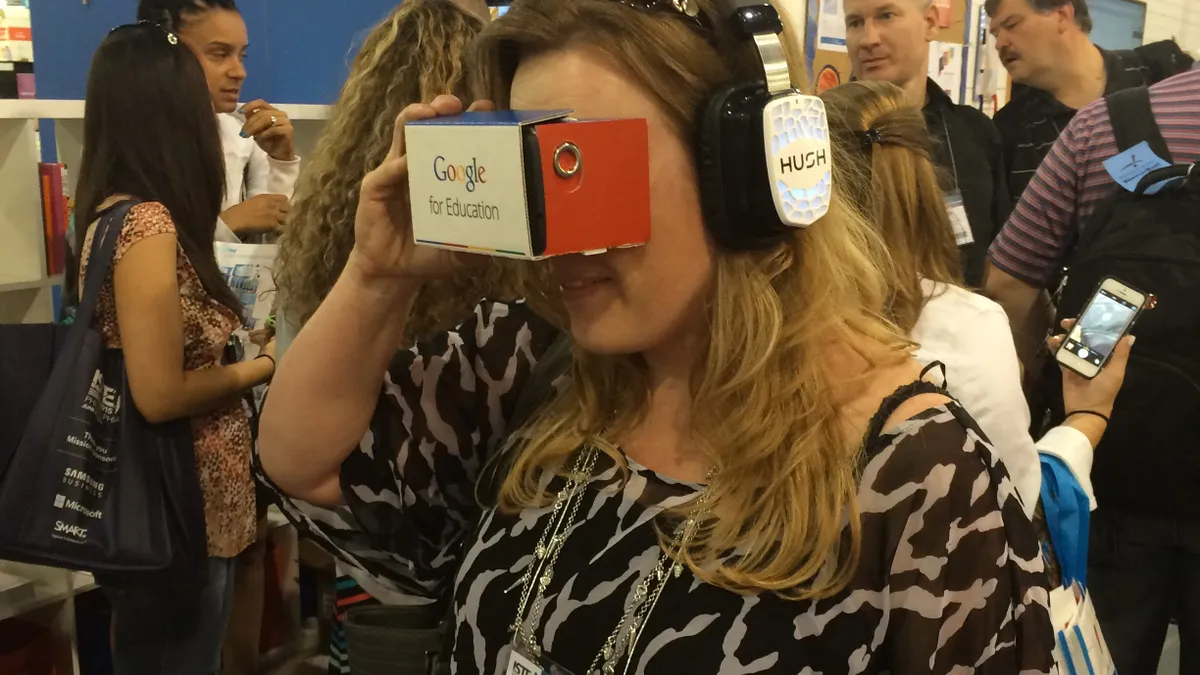Dive Brief:
- A maturing virtual reality marketplace is bringing an increasing number of cost-effective viewer and content options to the K-12 market.
- Cardboard viewers paired with smart phones remain the lowest-cost option on the market, though Ed Tech: Focus on K-12 reports Google offers a foam-and-fabric Daydream Viewer for $79, Samsung will soon release its Gear VR Headset for $129, and Microsoft is working on its own viewers with Lenovo, Acer and others.
- Many of the low-cost options are designed to either run with mobile devices or mid-range computers, and a variety of free or cost-effective content is available via Google Expeditions, YouTube, The New York Times, Discovery VR and more.
Dive Insight:
New technologies always offer exciting potential for the classroom, but initial costs are often prohibitive to their adoption for many schools. Virtual reality has been no exception, as it offers the possibility of extremely immersive learning experiences where students can be placed in the middle of a historical event or taken on a "field trip" to the Louvre in Paris, the Flavian Amphitheatre in Rome, or the monuments of Washington, DC. For rural students, virtual field trips can be especially invaluable, as there may not be museums or other educational attractions within a reasonable distance from their schools.
Of course, any new tech will also necessitate plenty of professional development, as a number of schools and districts have learned with device rollouts in recent years. But properly incorporated into curriculum, the tech could significantly boost student engagement and open thought around content in ways not previously imagined.








 Dive Awards
Dive Awards





